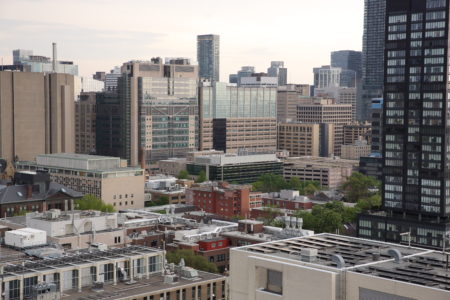Author: Milan
College and Spadina
Daniels Architecture faculty
West across The Annex
Hazy view west
Pro-Palestine encampment 2/2
Pro-Palestine encampment 1/2
Travis Rector on fossil fuel abolition
About 90% of climate change is from the extraction and use of fossil fuels. We need to stop. As Chapters 6 and 7 point out, this won’t be easy—especially when fighting against industries that stand to lose trillions of dollars from the energy transition. But the rapid growth of wind and solar shows us that it’s already happening. Our role is to help it happen even faster.
Rector, Travis A. “Preface.” In: Rector, Travis A. Climate Change for Astronomers: Causes, consequences, and communication. IOP Publishing, 2024. p. xxi
Also:
We are at a crossroads in the history of our 4.5-billion-year-old planet. These days in which we are alive are precious beyond measure, especially from the perspective of Earthlings who come after us. Every day the fossil fuel industry continues to exist makes our planet hotter, taking us more deeply into irreversible catastrophe. The only way out is to end the fossil fuel industry; the faster we do, the more we will save… It is incredibly important to fight the fossil fuel industry, which has captured world leaders and international climate negotiations.
Kalmus, Peter. “Foreward.” In: Ibid p. xxii
Enjoying Toronto’s Bike Share in the summer
On Wednesday evening, I did a 55km bike ride: east from the U of T campus across the Don into the beaches area, down to the southern tip of Tommy Thomson Park, then along the waterfront for a picnic dinner at a Queen’s Quay grocery store, and up the hill to The Perch.
These animations show the ride in yellow as well as all my previous walks and rides since 2020 in green:
Hale on why climate stability advocates are often confounded
The combination of uncertainty and low salience, in turn, enables obstructionism, the ability of interests tied to the status quo to maintain their interests. Consider the hurdles of a policy entrepreneur would have to overcome to create and implement a policy addressing a problem with distant effects like climate change. First, that policy entrepreneur would have to herself see value in pursuing an obscure issue, one that is unlikely to garner her a quick win and the associated political benefits. Few will have incentives to pursue such causes. Second, she would have to mobilize a sufficient coalition of interests to be able to influence policy. This would require each of those interests choosing to focus on a distant topic over their more urgent priorities. Third, this interest coalition would need to force the issue onto the broader political agenda, competing for limited space with numerous immediate priorities. Fourth, the coalition would need to somehow overcome, compensate, or neutralize political opponents.
To the extent those opponents are worried about the short-term costs of action, everything that is hard for the long-sighted policy entrepreneur will be easy for them. Opposing long-sighted policy—that is, promoting short-term outcomes—will give them the opportunity for quick wins on issues that are relatively easy to mobilize interests around. And even if the long-term-oriented policy entrepreneur wins a battle, she must preserve and maintain those gains permanently, as opponents will seek to reverse any defeats they face. A one-off victory may be important, but long problems often require sustained policies over time, while it only takes one victory by opponents to block them. The longer a problem’s effects reach into the future, the more friction the policy entrepreneur will face at every stage, and, should she get a win, the more enduring her victories will need to be.
Hale, Thomas. Long Problems: Climate Change and the Challenge of Governing Across Time. Princeton University Press, 2024.
Related:







